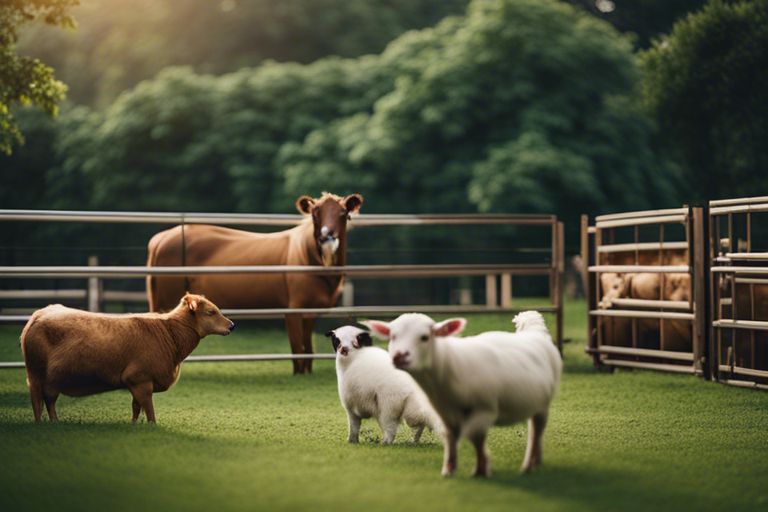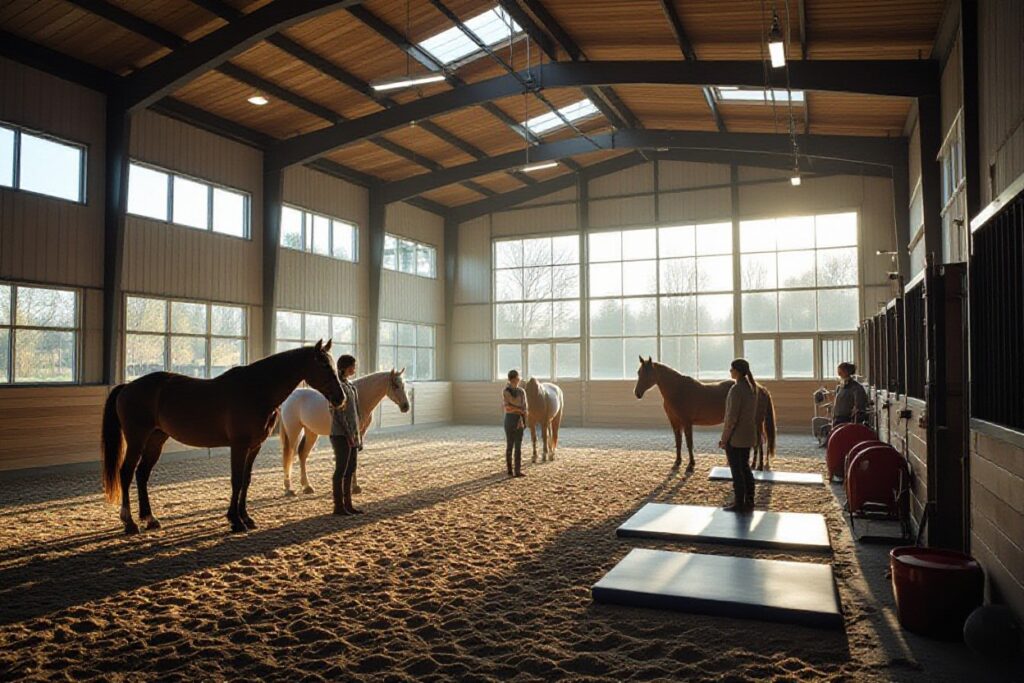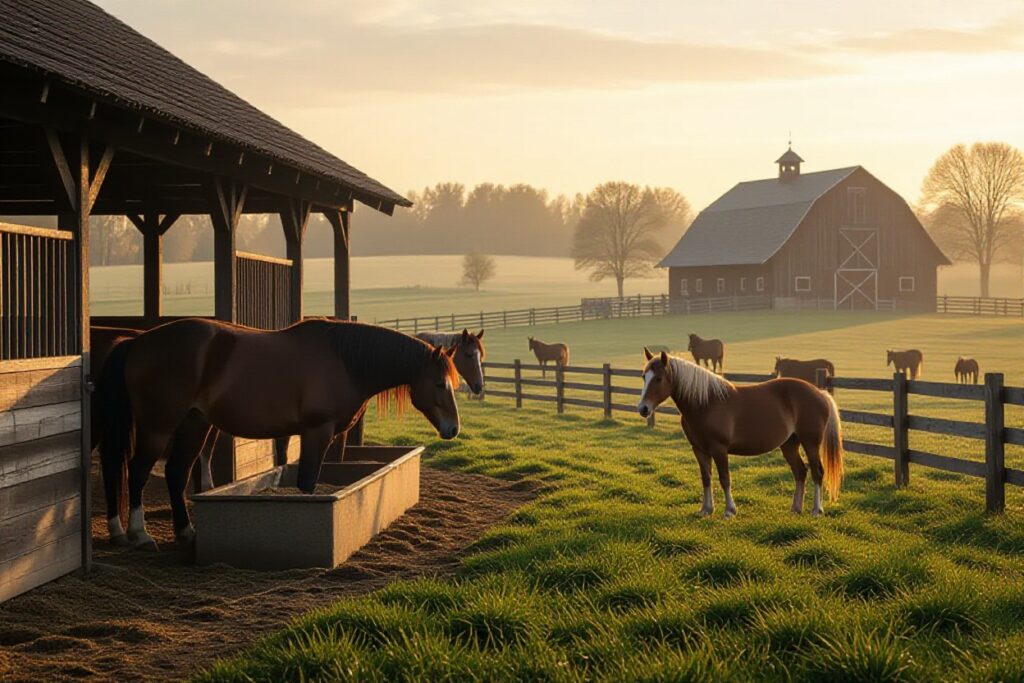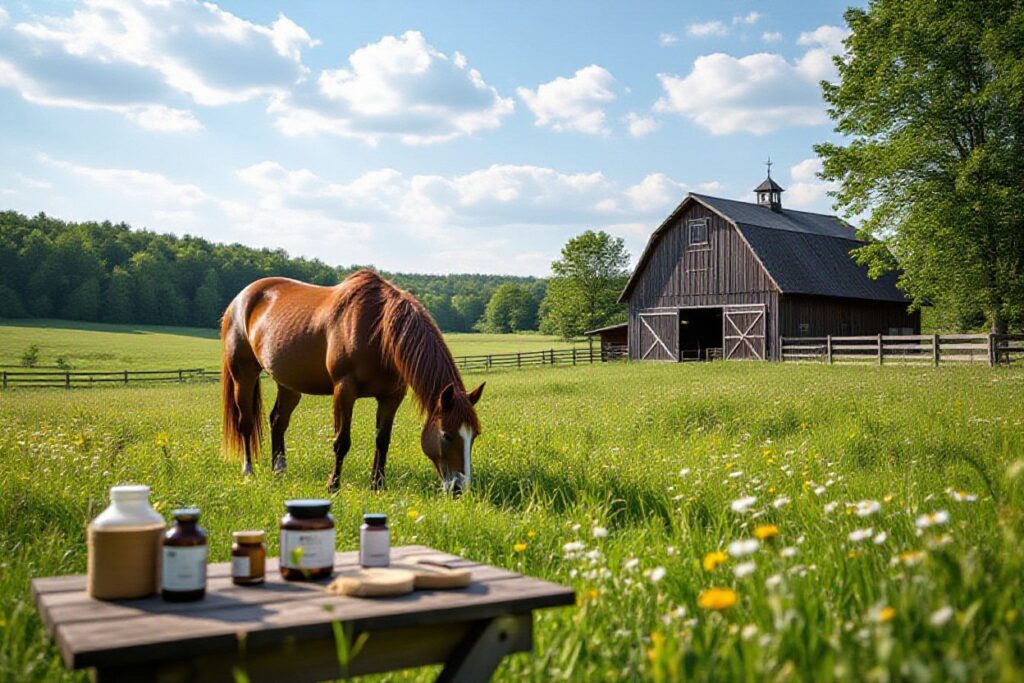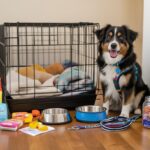Many livestock owners understand the importance of providing a safe and secure shelter for their animals. Whether you own cattle, goats, sheep, or horses, a well-built shelter is crucial for protecting your livestock from the elements and ensuring their health and well-being. In this comprehensive guide, we will walk you through the process of building a sturdy and functional livestock shelter. From choosing the right location and materials to constructing the shelter and adding finishing touches, this guide covers everything you need to know to create a comfortable and safe space for your animals.
Understanding Livestock Shelter
While building a livestock shelter, it is important to understand the specific needs of the animals you are housing. Proper shelter not only protects the animals from harsh weather conditions but also provides them with a safe and comfortable environment to thrive.
Types of Livestock Shelters
- Open-air shelters
- Three-sided shelters
- Barns
- Hoop buildings
- Pasture shelters
| Open-air shelters | Simplest form of shelter with no walls, providing protection from sun and rain. |
| Three-sided shelters | Partially enclosed structure with three walls, offering more protection from wind and rain. |
| Barns | Enclosed structures providing maximum protection and comfort for livestock. |
| Hoop buildings | Curved, lightweight structures suitable for temporary or seasonal use. |
| Pasture shelters | Movable shelters that can be transported to different grazing areas for rotational grazing. |
Factors to Consider Before Building
- Climate and weather patterns
- Number and size of livestock
- Available budget and resources
- Proximity to water and feed sources
- Local building regulations and codes
Assuming you have taken the time to understand the specific needs of your livestock, it is crucial to consider several factors before building a shelter for them.
The Factors to Consider Before Building
- Climate and weather patterns play a significant role in determining the type of shelter needed for your livestock.
- The number and size of your livestock will dictate the size and layout of the shelter.
- Consider the available budget and resources to ensure the shelter meets your needs without overspending.
- Proximity to water and feed sources is important for the health and well-being of your livestock.
- Check local building regulations and codes to ensure compliance and avoid any legal issues.
Shelters for livestock are a crucial aspect of animal husbandry, providing protection and comfort for your animals. By understanding the different types of shelters available and considering the necessary factors before building, you can create a safe and suitable environment for your livestock to thrive.
Planning Your Livestock Shelter
Choosing the Right Location
Some of the most crucial decisions when planning your livestock shelter involve choosing the right location. The location should provide easy access to water, electricity, and roads for transportation. It should also have good drainage, be away from flood-prone areas, and offer protection from harsh weather conditions. Consider the prevailing winds, sunlight exposure, and proximity to neighbors to ensure the well-being of your livestock.
Sizing and Capacity Considerations
Little thought should be put into sizing and capacity considerations when planning your livestock shelter. Calculate the space needed based on the number and size of animals you plan to house. Ensure there is enough room for them to move around comfortably, lie down, and access feed and water. It is better to err on the side of caution and go slightly larger than necessary, as overcrowding can lead to stress, disease, and reduced productivity.
When determining the capacity of your shelter, consider the different sections needed for various purposes such as feeding, milking, and birthing. Plan for growth and expansion in the future to accommodate any increase in livestock numbers.
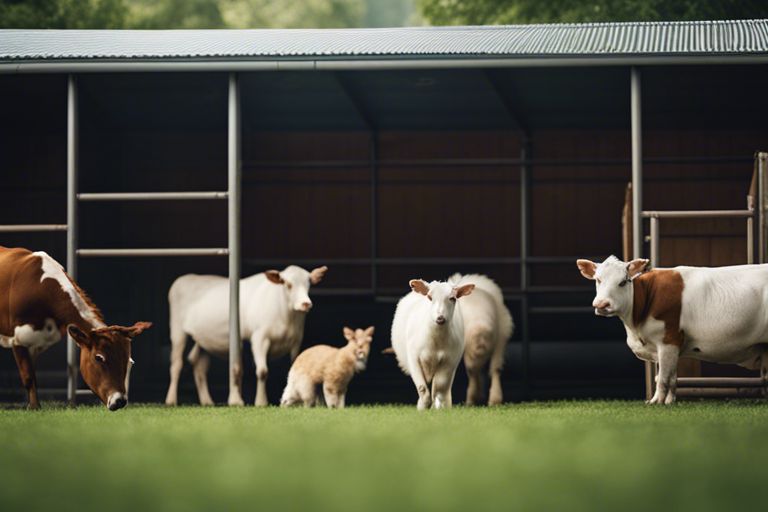
Building Your Livestock Shelter
Step-by-Step Construction Process
Your livestock shelter is a crucial element in ensuring the well-being of your animals. To help you build a sturdy and functional shelter, follow the step-by-step construction process outlined below:
| Step 1: | Site Selection and Preparation |
| Step 2: | Foundation and Flooring |
| Step 3: | Frame Construction |
| Step 4: | Roof Installation |
| Step 5: | Wall Construction |
| Step 6: | Finishing Touches |
Tips for a Durable and Efficient Shelter
For a durable and efficient livestock shelter, consider the following tips:
- Use quality materials that can withstand harsh weather conditions.
- Ensure proper ventilation to prevent the buildup of moisture and harmful gases.
- Design the shelter with adequate space for your animals to move around comfortably.
After implementing these tips, regularly inspect and maintain your shelter to ensure its longevity and functionality.
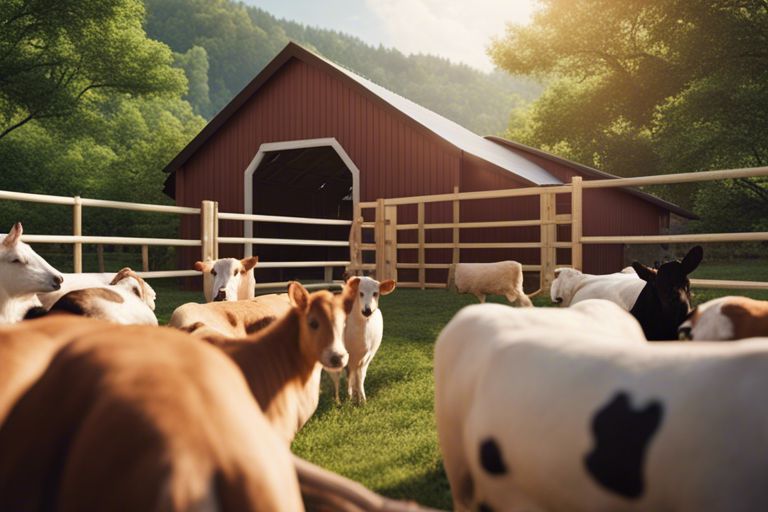
Maintenance and Upkeep
Routine Maintenance Tips
Not keeping up with regular maintenance can lead to costly repairs and endanger the well-being of your livestock. To ensure the longevity and functionality of your livestock shelter, implement routine maintenance tasks such as checking for leaks, repairing damaged fencing, cleaning out debris, and inspecting the structural integrity of the shelter. Regular inspections and repairs will help prevent any potential hazards and keep your livestock safe and secure.
- Check for leaks and repair them promptly.
- Inspect and repair any damaged fencing to prevent escapes.
- Clean out debris regularly to maintain cleanliness and prevent pest infestations.
- Regularly inspect the structural integrity of the shelter to ensure it can withstand harsh weather conditions.
Perceiving and addressing maintenance issues early on can save you time, money, and potential headaches in the long run.
Expansion and Upgrades
While ensuring the proper maintenance of your livestock shelter is crucial, considering expansion and upgrades can further enhance the functionality and comfort of your shelter. If your livestock farm has grown in size, you may need to expand the shelter to accommodate more animals or provide additional space. Upgrading the shelter with features like improved ventilation, better insulation, or automated feeding systems can also improve the overall well-being of your livestock and streamline your farming operations.
Routine maintenance combined with thoughtful expansion and upgrades can help you create a sustainable and thriving environment for your livestock, ultimately leading to better productivity and animal welfare.
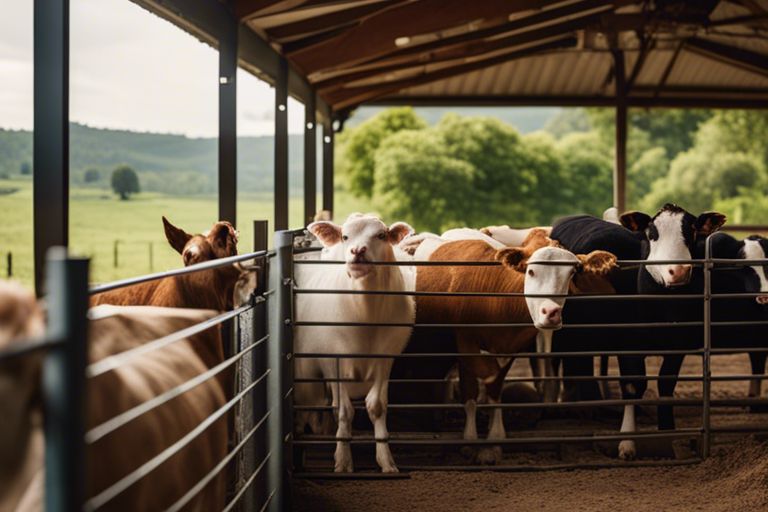
Pros and Cons of Different Shelter Options
| Shelter Option | Pros and Cons |
| Traditional Barn | Pros: Provides ample space and protection from the elements. Cons: Expensive to build and maintain. |
| Hoop Greenhouse | Pros: Cost-effective and easy to assemble. Cons: May not provide sufficient protection in extreme weather conditions. |
| Portable Shelter | Pros: Flexibility to move around the farm. Cons: Less durable than permanent structures. |
| Open-Air Shelter | Pros: Allows for natural ventilation. Cons: Offers minimal protection from harsh weather. |
Comparison of Materials
There’s a wide range of materials available for building livestock shelters, each with its own pros and cons. Factors to consider include durability, cost, and suitability for your climate. For example, metal shelters are durable and low maintenance, but they can get very hot in the summer. On the other hand, wood shelters offer good insulation but may require more upkeep over time.
Cost-Benefit Analysis
Shelter options vary greatly in cost, with traditional barns being the most expensive and portable shelters being more budget-friendly. When conducting a cost-benefit analysis, consider not only the upfront cost of construction but also ongoing maintenance expenses. It’s crucial to balance your budget with the long-term needs of your livestock to ensure they are properly housed and protected.
CostBenefit analysis should also take into account the lifespan of the shelter, the ease of assembly, and the specific needs of the livestock you are housing. While cost is an important factor, it’s equally crucial to prioritize the safety and well-being of your animals when selecting a shelter option.
Final Words
With these considerations in mind, you are well-equipped to start building your own livestock shelter. Remember to prioritize the safety, comfort, and needs of your animals while also ensuring the structure is durable and efficient. By following the ultimate guide to building a livestock shelter, you can create a space that promotes the health and well-being of your livestock, ultimately leading to a successful and sustainable farming operation.
FAQ
Q: Why is a livestock shelter important?
A: A livestock shelter is crucial for protecting animals from harsh weather conditions, predators, and providing a safe and comfortable environment for them to thrive.
Q: What factors should be considered when building a livestock shelter?
A: When building a livestock shelter, factors such as location, size, ventilation, drainage, and materials used should be carefully considered to ensure the well-being of the animals.
Q: What are the different types of livestock shelters?
A: Livestock shelters can vary from simple three-sided structures to fully enclosed barns. The type of shelter needed depends on the number and type of animals being housed.
Q: How can I ensure proper ventilation in a livestock shelter?
A: Proper ventilation in a livestock shelter can be achieved by installing windows, vents, or fans to allow for fresh air circulation and reduce moisture build-up.
Q: What materials are best for building a livestock shelter?
A: Durable and easy-to-clean materials such as metal, wood, or concrete are ideal for building a livestock shelter. These materials provide insulation and protection for the animals.
Q: How can I maintain a livestock shelter?
A: Regular cleaning, inspections for damages, and repairs are imperative for maintaining a livestock shelter. Keeping the shelter clean and in good condition ensures the health and safety of the animals.
Q: Are there any regulations to consider when building a livestock shelter?
A: Yes, there may be local regulations or zoning requirements to consider when building a livestock shelter. It is important to check with local authorities to ensure compliance with any regulations in place.
